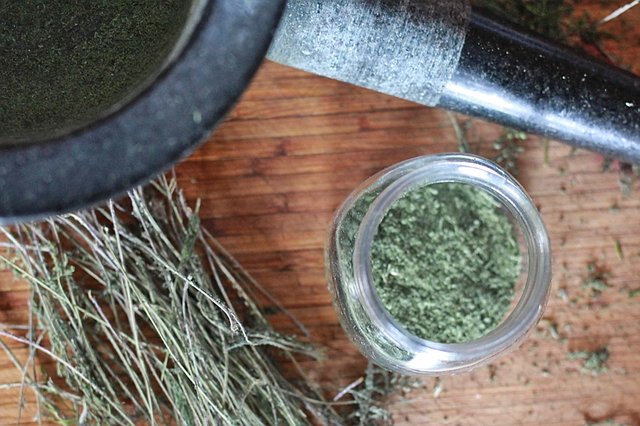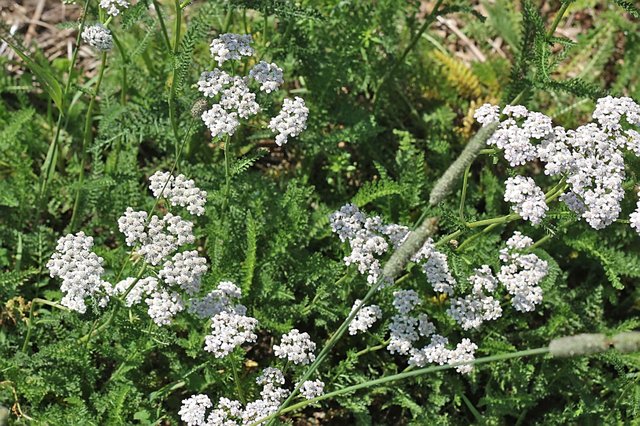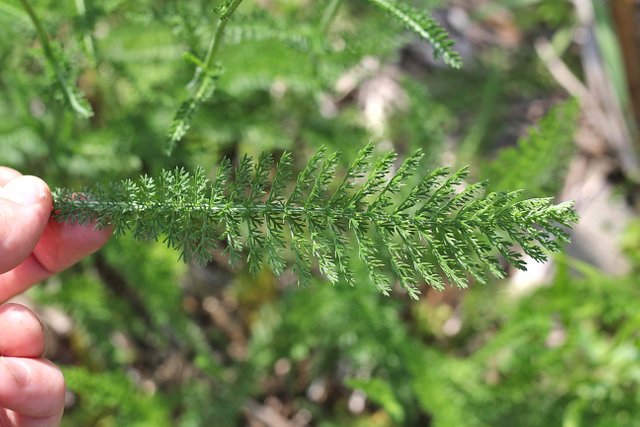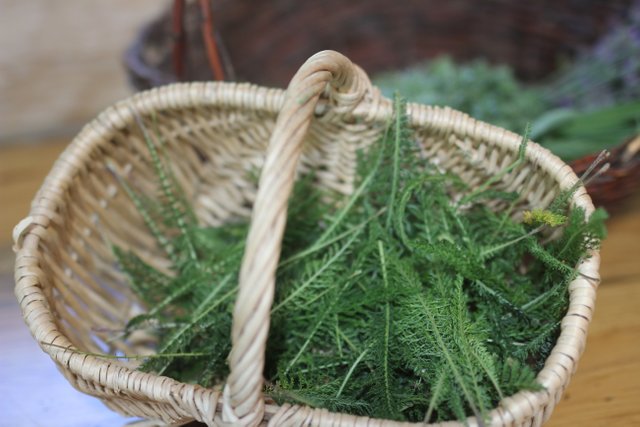Stop Bleeding With Homemade Yarrow Styptic Powder

Yarrow is a common wild flower in the asteraceae family. You’ll find it spread across North America, Europe and Asia, It has long been revered for it’s ability to staunch bleeding, prevent infection and numb pain.
The Latin name for yarrow, Achillea millefolium has an interesting story. Achillea comes from Greek mythology. According to legend, Achilles the great Greek warrior used yarrow on the battlefield to heal soldiers wounds. Millefolium refers to the many fine leaflets on each yarrow leaf.
In the middle ages Yarrow was not only used for healing, it was also an ingredient used to flavor ale. Today, it as useful and versatile as it was in ancient times. Both the leaves and flowers are used for a wide range of herbal and even culinary preparations.
Yarrow for wound care
When used for wound care the leaves can be used to staunch the flow of blood. They can be mashed up and used as a fresh poultice or dried into a convenient powder. In addition to its ability to staunch bleeding, yarrow also contains beneficial antibacterial and antimicrobial properties that are also highly beneficial for wound care.
The easiest way to use yarrow for wound care is in the form of a syptic powder, something that’s very easy to make at home. If you happen to have a food dehydrator you can have a batch of this powder made in under three hours, otherwise it will take a few days for the leaves to become dry and brittle. This shelf stable powder can last up to five years when stored correctly so it’s well worth the effort.
To make a yarrow powder, first you’ll need to know where to look.
Most often you’ll find yarrow spread across meadows, disturbed areas and barren lands. We are fortunate to have it growing all over our back yard.
How to identify yarrow
Yarrow is easily identified by its tiny white clusters of flowers and feathery fern like leaves. Although it is less common, you’ll also find yarrow growing wild in shades of lilac and yellow.
It can sometimes be confused with Queen Anne's Lace or wild carrot, but the flowers of yarrow are thicker, not as lacy and the clusters are not quite as umbrella like.


Word of caution when foraging for wild plants
Learning how to use wild plants is very easy but it should be approached with caution. If you are unfamiliar with a certain plant it is best to have them correctly identified by someone knowledgeable. Carrying a local field guide is something we highly recommend.
Special Precautions
Persons with allergies to other members of the Asteraceae family should exercise caution with yarrow. It is best that you contact a qualified herbal practitioner before using yarrow if you are pregnant, nursing or taking medications.

Yarrow Styptic Powder Directions
Gather a good handful of leaves from the base of the stalk. These leaves will be long and feathery. Never take more than 1/3 of the leaves from any plant or you can kill it.
You can spread the leaves out of a mesh screen, hang them in bundles or use a food dehydrator to dry them. Air Drying takes 2-5 days whereas the dehydrator takes only a few hours.
Once dry, strip the stems from the feathers by gliding your hand down the stem. Discard the stems.
Using a grinder or a mortar and pestle grind the feathers into a fine powder. You might want to wear a mask as the powder can float into the air.
Once ground you can store it in an airtight jar. Keep in a dark, dry location and it will last for up to five years.
How To use styptic powder
Apply a small amount of the dry powder to small cuts, bruises, scrapes, insect bites and other abrasions. You can affix a band aid or wrap over the powder to secure it in place.
It can also be used for pets. If you happen to be cutting nails and catch the cuticle, covering the claw with some powder should staunch the bleeding quite quickly.
Building a greener, more beautiful world one seed at a time.
Homesteading | Gardening | Frugal Living | Preserving Food| From Scratch
Cooking|
You can also find me at: walkerland.ca |
Facebook
Photo copyright: @walkerland


Great post! I grew up in Alaska calling yarrow stink weed :) such a wonderful plant so abundant and powerful. Thanks for the directions on styptic powder, I will make some today!
I love the smell of yarrow but I know some people can't stand it so I guess that name fits. :) It truly is a wonderful plant with so many beneficial uses.
Oh this is definitely a powder I will make to have on hand. I hadn't realized how to make it; or that it was possible.
I am constantly getting scrapes, little cuts and this would come in handy.
I've been reading everything we can find about yarrow - we have such a lot of it growing in the garden. It is such amazing stuff - you can make salves, tinctures, emergency poultices, and much more. Such a cool plant.
I have a yarrow first aid salve I made earlier this year for my husband; he has problems with his skin and getting boils. The yarrow salve really helps draw out the infection... but now I'm wondering if making a powder and then adding saline water to the powder to make a poultice could help even more.
THIS IS SO AWESOME!!
Really interesting! I'm so glad the salve is working for you. Yarrow is a sensational plant.
This is real handy to know! The doctor has my husband on an aspirin a day, and he bleeds a lot if he gets cut. I've got lots of yarrow, and could easily make this powder.
It is so easy to make. My husband's uncle is the same. He is on blood thinners and every time he comes here he gets a cut that won't stop bleeding. This powder really works well.
You know.. now that you mention it. My dad has coumadin level issues and he can't even shave for fear of cutting himself. He also has A-Fib... bad combination. I may have to mention this to my mom.
that must really be worrisome. Maybe the doctors would be able to advise him if a styptic powder would work?
This post was shared in the Curation Collective Discord community for curators, and upvoted and resteemed by the @c-squared community account after manual review.
Wow this is amazing!!! I knew yarrow was useful and I used to see it grow wild in the hedges in England. We used to grow it in herb gardens years ago, but I've moved away from that cottage style of gardening, mainly as it's hard for me to maintain here.
I love your photos - you are the master of a beautiful post.
It's funny, we've been talking about Achilles in class as the book we're studying talks about this moment from the Illiad as he grieves over his friends body. We were discussing the idea of leadership, and examining the text for instances that Achilles shows he has great care and love and obligation towards his men, despite the atrocity he commits which goes against warrior codes. This little snippet feeds into that - Achilles tending to his men with yarrow. I'm going to file this away in my head for the zombie apocalypse.
oh what a neat synergy! I read quite a bit about it when writing this piece and he really did seem to care for his men (or so it was recorded this way).
We have yarrow all over the place our "lawn" is a good part yarrow and clover mixed with all kinds of other wild things.
I used to buy yarrow and plant it in my flower garden when we lived in the cold north. I find it funny that all of the pretty flowers I was carefully selecting, growing and spending money on (yarrow, daisy, black eyed susan) are all wild flowers here. It's like hitting the jackpot.